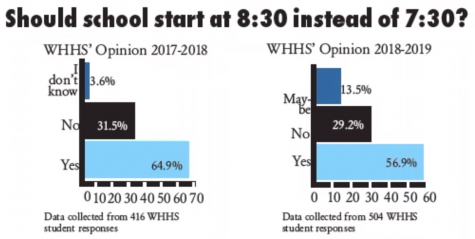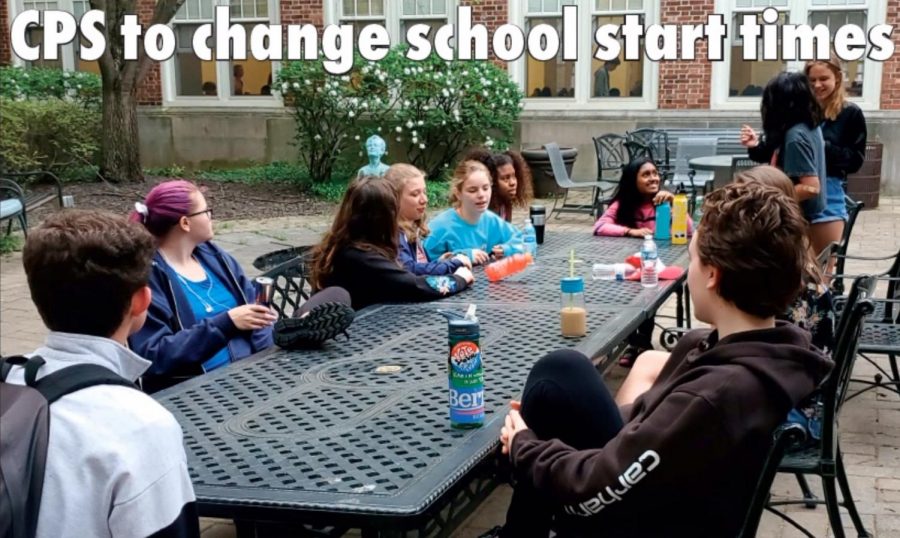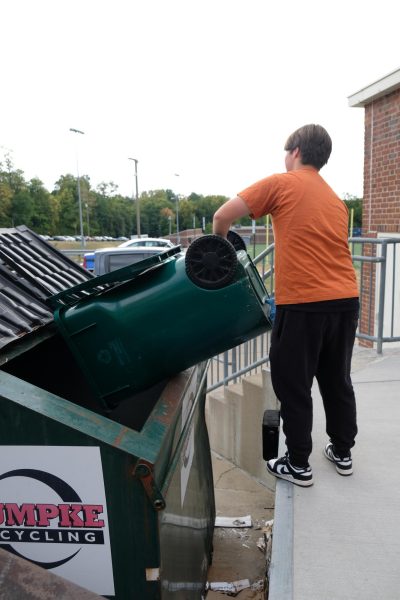CPS to change school start times
Students gather in the courtyard outside the cafeteria, many of them with caffeinated beverages, a place that is light during the spring but dark during much of the school year. Over the next several years as WHHS transitions to a later school start time, many proponents of the change hope it will help students sleep more and not commute to school in the dark, preventing accidents.
On April 15, 2019, the Cincinnati Board of Education passed a resolution declaring that over the next three years, school start times at high schools in Cincinnati Public Schools will be pushed back from their current start times to between 8:30 a.m. and 9:00 a.m.
This announcement comes as a shock to many who either did not expect the resolution to pass, or were not aware the vote was taking place.
This strong push for later school start times began more than two years ago, as a combined effort between local health officials and concerned CPS parents. In those two years, these select groups of active parents and officials regularly attended CPS Board meetings in support of the effort to push back start times.
On the day in question, donned in yellow clothing to indicate support, the advocates were allowed some 15 minutes to argue in support of their resolution. Then, about 90 minutes later, the resolution passed among the board.
The officials resolution reads, “THEREFORE BE IT RESOLVED, that the Superintendent be directed to begin a three-year Healthy High School Start Time Implementation Plan commencing in 2019-2020.”
The plan to initiate, however, is far more complex than a simple announcement.
Perhaps the biggest hurdle is the bus system, upon which thousands of CPS students rely for their rides to school every day. CPS borrows local metro buses to help with their before-school bus routes. Historically, this has been possible because early high school start times meant that buses were free to assist before rush hour. But with later school start times, these necessities may now overlap.
A major concern going into this transition is that, in order to accommodate this new stress on the busing system, students may be forced to board buses significantly earlier than their new school start times, somewhat nullifying the positive effects proponents of later school start times have discussed. However, it is worth noting that in their official resolution, CPS mentioned “even if due to financial or logistical barriers, some schools may start as early as 8:00, the number of Cincinnati Public Schools high schoolers leaving home in the dark will be minimized.”
Another major transportation concern involves rides given by parents to their children. Parents who earlier had the ability to provide rides may now find themselves incapable due to later school start times overlapping with jobs or other obligations.
Despite these drawbacks, many have pointed to significant evidence to support the implementation of later school start times. CPS notes that scientific evidence supports the notion that teens require more sleep than other age groups to be fully functional and aware. Further research has demonstrated that later school start times demonstrably increase the amount of sleep students get, countering the idea that students will simply go to bed later and receive the same amount of sleep regardless.
In the midst of much mental health concern, CPS also notes in their full resolution that “sleep deprivation increases the risk of depression, anxiety, illness, obesity, athletic

In the last two years, students have become less in favor of a start time change. However, the pro-change sentiment still exists for a majority of WHHS students, according to 2017-2018 and 2018-2019 school year polls. The 2018-2019 poll was conducted prior to the Board of Education decision to change start times.
injuries, and suicide.” It is for these reasons that many independent health organization across the nation recommend later school start times for teens.
CPS has chosen to implement this new system gradually over a period of three years to help reduce any issues and new complexities that may arise. One proposal would have WHHS starting at 7:45 a.m. next year and then gradually transitioning to CPS’ 8:30 a.m. goal by the end of the three-year deadline. However, many proposals will likely be considered before a decision is made for how the transition will work, and The Chatterbox will update this story as the decision becomes clear.
Last year, CPS surveyed 519 students in grades 7-12, in which 73 percent agreed that later school start times would allow them more sleep, and 50 percent agreed they would feel less rushed in the morning, according to the CPS website. The full resolution and more information on the issue can be found at https://www.cps-k12.org/news/whats-new/board-approves-resolution-supporting-later-start-times.
Until this new system is implemented and tested across CPS, students and faculty alike will be forced to wait to see the concrete results. However, those who care about the issue can express their opinions on the topic at Board of Education meetings, a schedule for which can be found on the CPS website.
Your donation will support the student journalists of Walnut Hills High School. Your contribution will allow us to purchase equipment, cover our annual website hosting, printing costs and offset competition and conferences fees for students.









